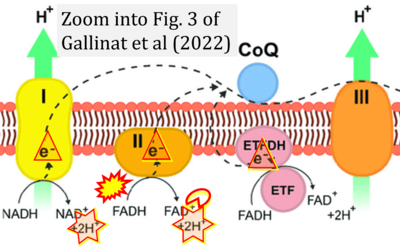Gallinat 2022 Int J Mol Sci
| Gallinat A, Vilahur G, Padró T, Badimon L (2022) Network-assisted systems biology analysis of the mitochondrial proteome in a pre-clinical model of ischemia, revascularization and post-conditioning. Int J Mol Sci 23:2087. https://doi.org/10.3390/ijms23042087 |
Gallinat A, Vilahur G, Padró T, Badimon L (2022) Int J Mol Sci
Abstract: Infarct size is the major risk predictor for developing heart failure after an acute myocardial infarction (AMI). The discovery of the conditioning phenomena (i.e., repetitive brief cycles of ischemia applied either before or after a prolonged ischemic insult) has highlighted the existence of endogenous protective mechanisms of the heart potentially limiting infarct size after revascularization. However, most cardioprotective strategies, aiming at infarct size reduction, have failed in clinical studies. Thus, cardioprotection is an unmet clinical need. In the present study, we took a network-assisted systems biology approach to explore the mitochondrial proteomic signature of the myocardium after ischemia, ischemia with direct revascularization, and ischemia with re-establishment of blood flow by post-conditioning in a swine model of AMI. Furthermore, network extension with the ENCODE project human regulatory data allowed the prediction of potential transcription factors at play in the response to post-conditioning of the myocardium. Collectively, our results identify cardiac metabolism as a driver of cardioprotection, highlighting a dual role for post-conditioning promoting metabolic reprogramming of the myocardium, and a protective response mediated by VDAC2 and DJ-1 in the mitochondria.
• Bioblast editor: Gnaiger E
Correction: FADH2 and Complex II
- FADH2 is shown as the substrate feeding electrons into Complex II (CII). This is wrong and requires correction - for details see Gnaiger (2024).
- Gnaiger E (2024) Complex II ambiguities ― FADH2 in the electron transfer system. J Biol Chem 300:105470. https://doi.org/10.1016/j.jbc.2023.105470 - »Bioblast link«
Hydrogen ion ambiguities in the electron transfer system
Communicated by Gnaiger E (2023-10-08) last update 2023-11-10
- Electron (e-) transfer linked to hydrogen ion (hydron; H+) transfer is a fundamental concept in the field of bioenergetics, critical for understanding redox-coupled energy transformations.
- However, the current literature contains inconsistencies regarding H+ formation on the negative side of bioenergetic membranes, such as the matrix side of the mitochondrial inner membrane, when NADH is oxidized during oxidative phosphorylation (OXPHOS). Ambiguities arise when examining the oxidation of NADH by respiratory Complex I or succinate by Complex II.
- Oxidation of NADH or succinate involves a two-electron transfer of 2{H++e-} to FMN or FAD, respectively. Figures indicating a single electron e- transferred from NADH or succinate lack accuracy.
- The oxidized NAD+ is distinguished from NAD indicating nicotinamide adenine dinucleotide independent of oxidation state.
- NADH + H+ → NAD+ +2{H++e-} is the oxidation half-reaction in this H+-linked electron transfer represented as 2{H++e-} (Gnaiger 2023). Putative H+ formation shown as NADH → NAD+ + H+ conflicts with chemiosmotic coupling stoichiometries between H+ translocation across the coupling membrane and electron transfer to oxygen. Ensuring clarity in this complex field is imperative to tackle the apparent ambiguity crisis and prevent confusion, particularly in light of the increasing number of interdisciplinary publications on bioenergetics concerning diagnostic and clinical applications of OXPHOS analysis.




